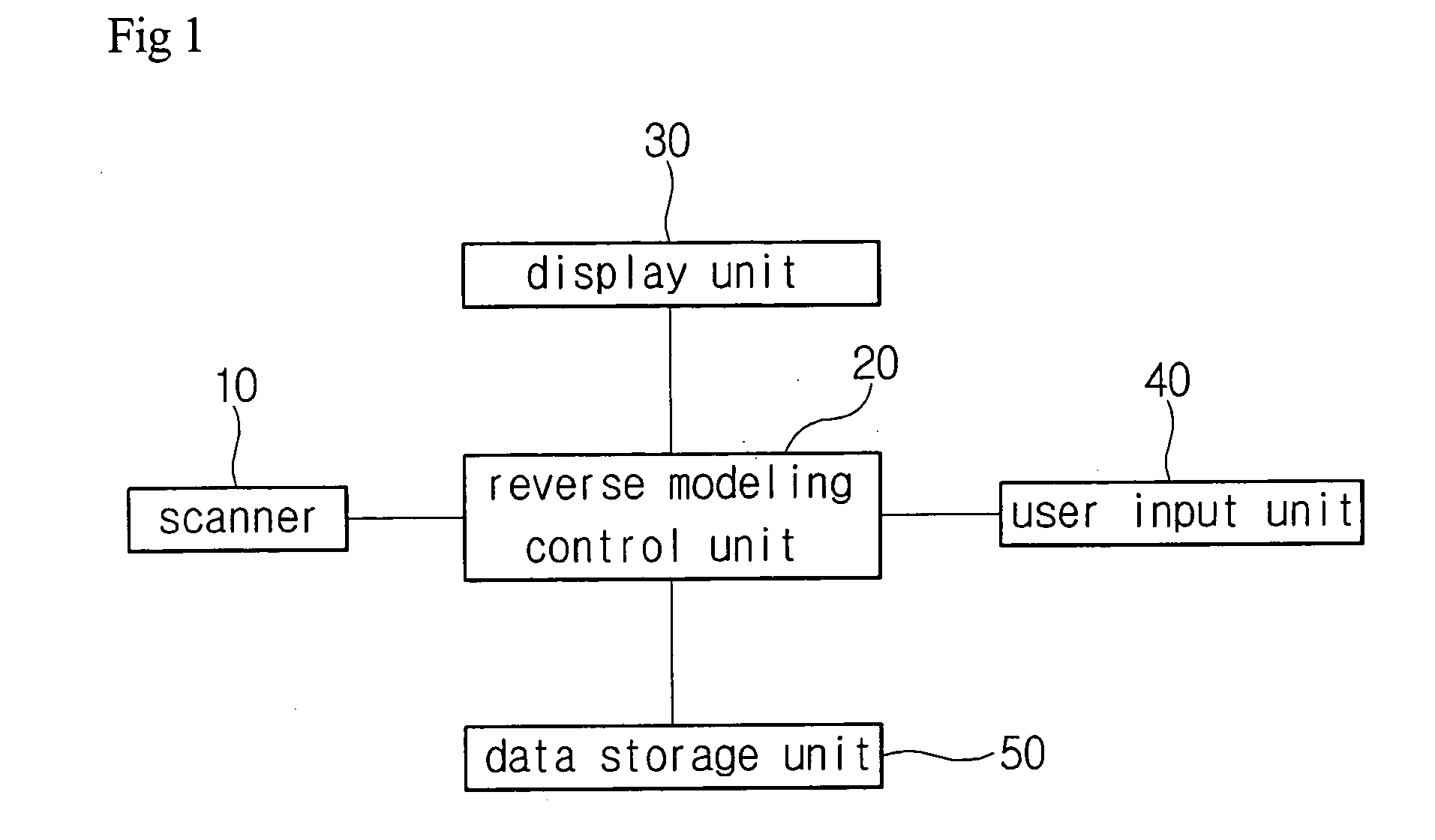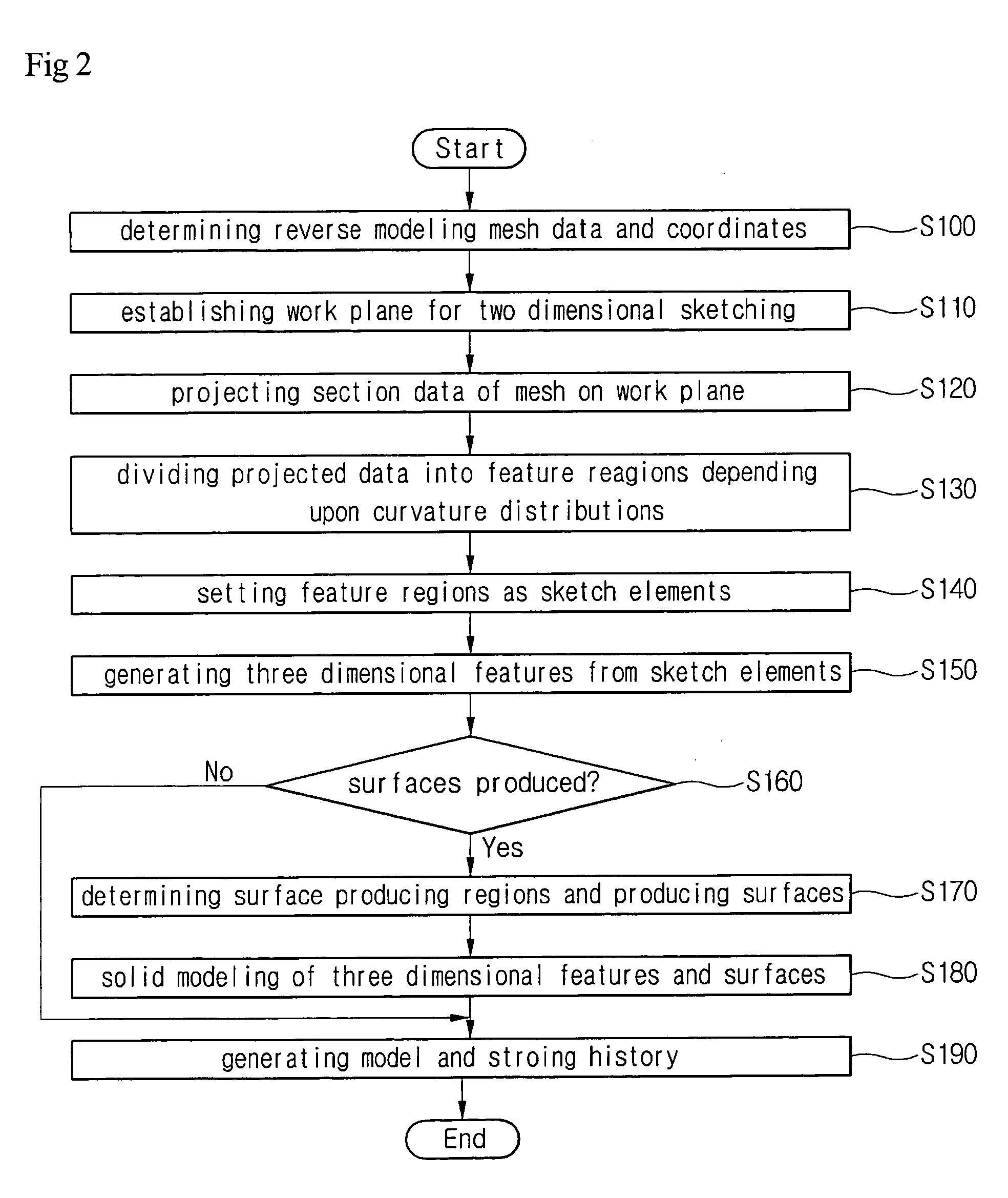Reverse modeling method using mesh data as feature
a technology of feature and mesh data, applied in the field of reverse modeling method using mesh data as a feature, can solve the problems of changing data, difficult to acquire reverse engineered data, and data acquired by scanning a product or a part may have errors in some degr
- Summary
- Abstract
- Description
- Claims
- Application Information
AI Technical Summary
Benefits of technology
Problems solved by technology
Method used
Image
Examples
Embodiment Construction
[0050]Hereinafter, a preferred embodiment of the present invention will be described with reference to the accompanying drawings. In the following description and drawings, the same reference numerals are used to designate the same or similar components, and so repetition of the description on the same or similar components will be omitted.
[0051]FIG. 1 is a block diagram illustrating the construction of a reverse modeling system using mesh data as a feature in accordance with the present invention. Referring to FIG. 1, the system for detecting a reverse modeling object includes a scanner 10 for measuring the reverse modeling object, a reverse modeling control unit 20 for controlling the entire modeling system and performing a reverse modeling function, a display unit 30 for outputting scan data detected from the scanner 10 or mesh data produced by transforming the scan data (hereinafter, referred to as “mesh data”) to allow a user to confirm the data, a user input unit 40 for detect...
PUM
 Login to View More
Login to View More Abstract
Description
Claims
Application Information
 Login to View More
Login to View More - R&D
- Intellectual Property
- Life Sciences
- Materials
- Tech Scout
- Unparalleled Data Quality
- Higher Quality Content
- 60% Fewer Hallucinations
Browse by: Latest US Patents, China's latest patents, Technical Efficacy Thesaurus, Application Domain, Technology Topic, Popular Technical Reports.
© 2025 PatSnap. All rights reserved.Legal|Privacy policy|Modern Slavery Act Transparency Statement|Sitemap|About US| Contact US: help@patsnap.com



